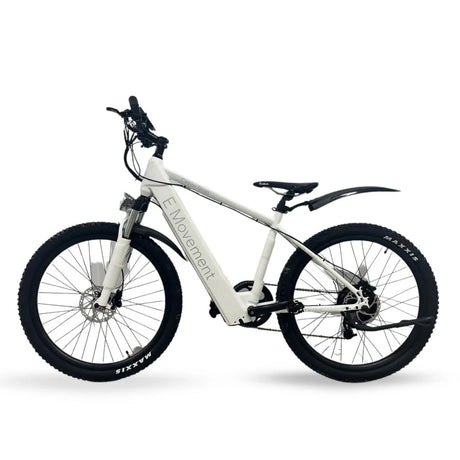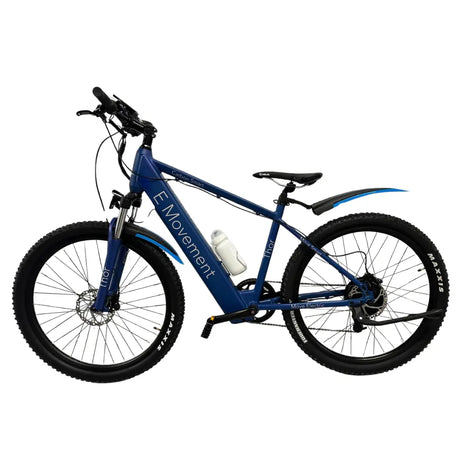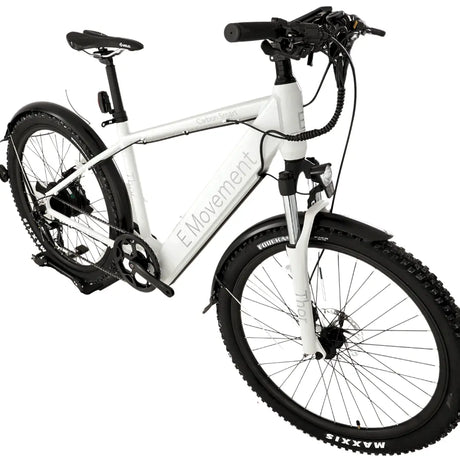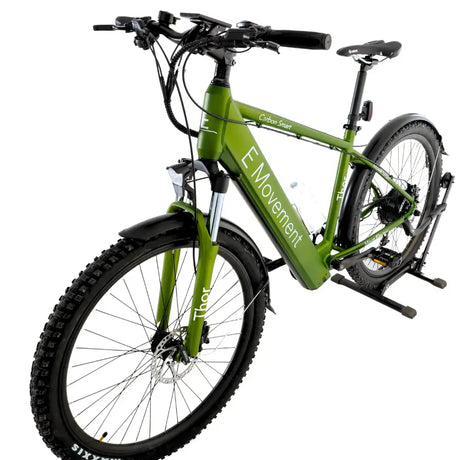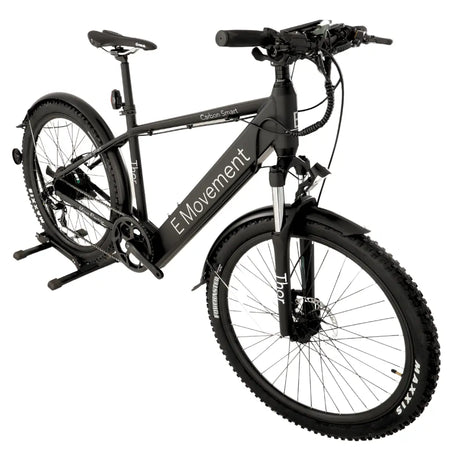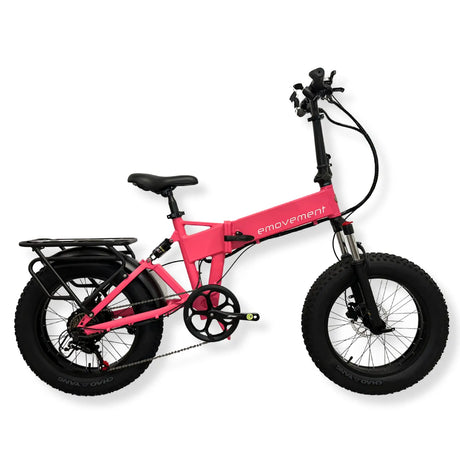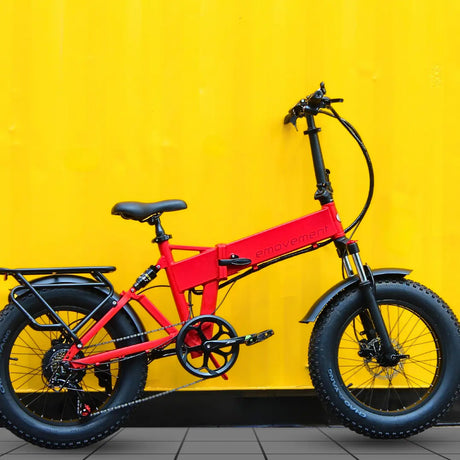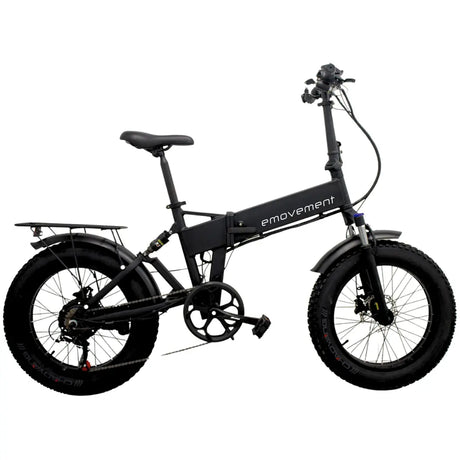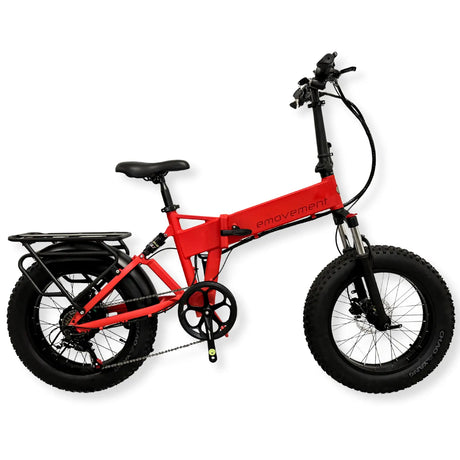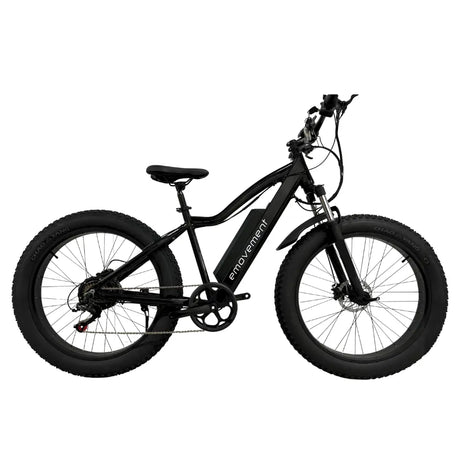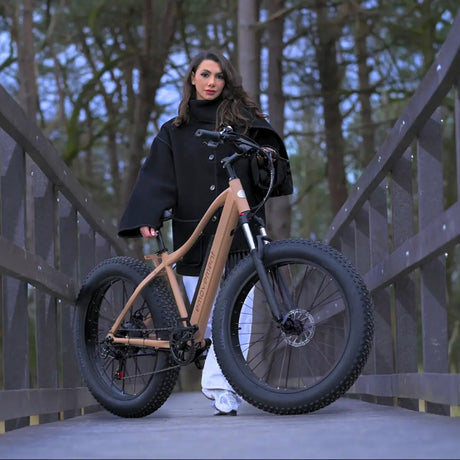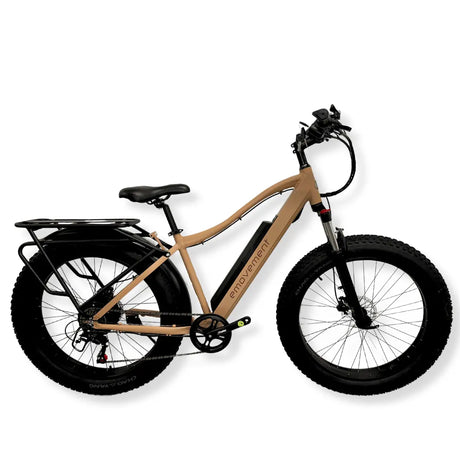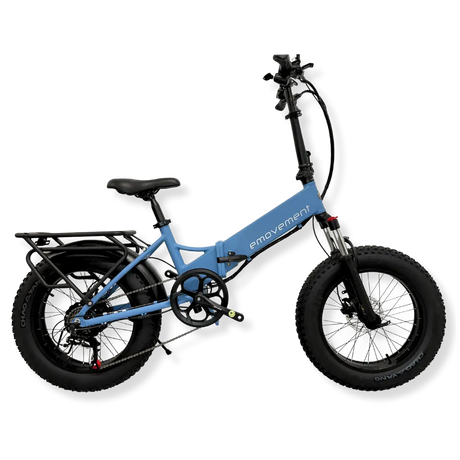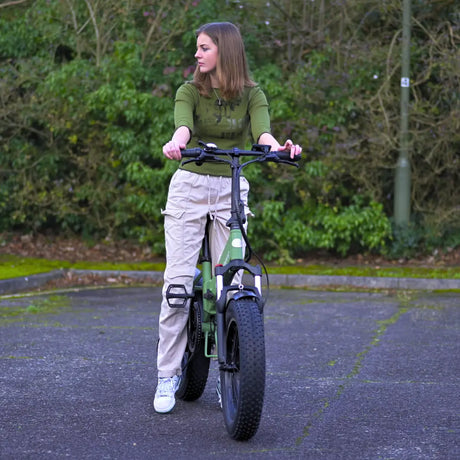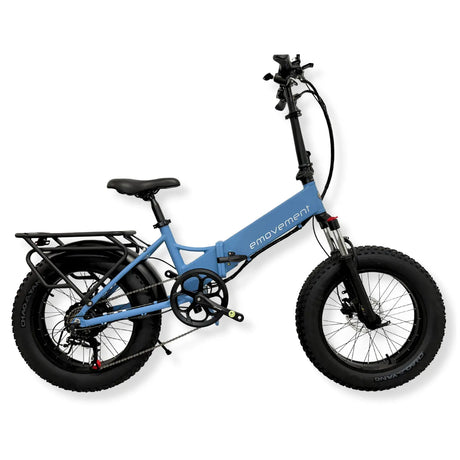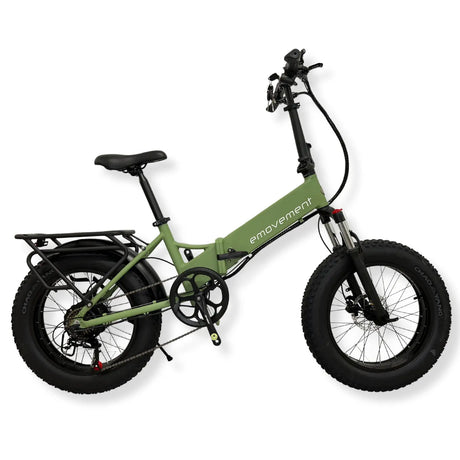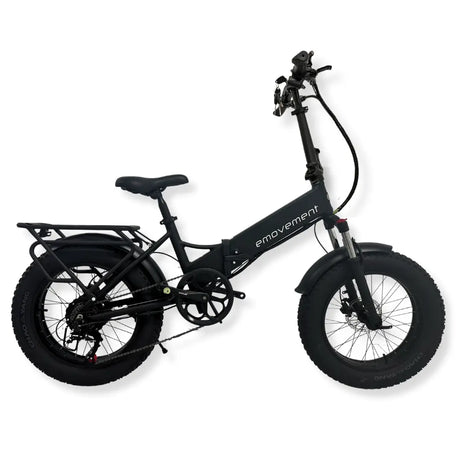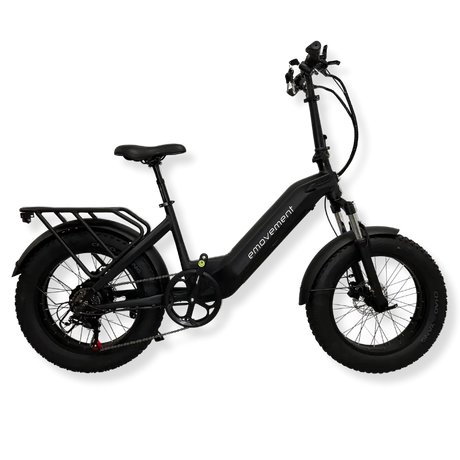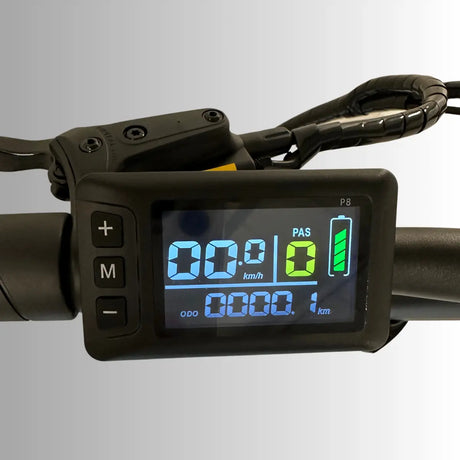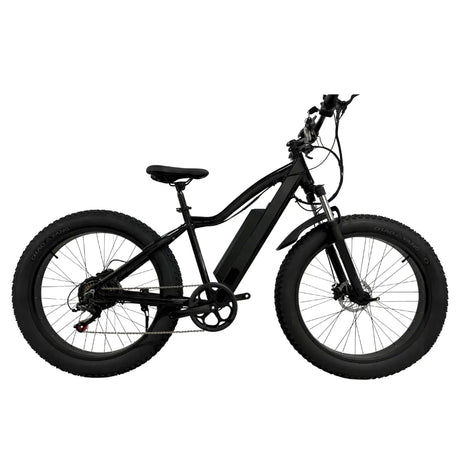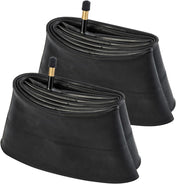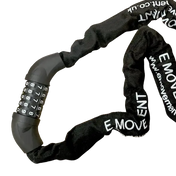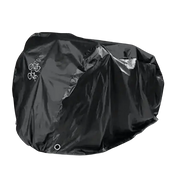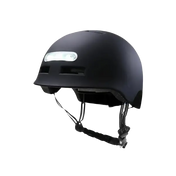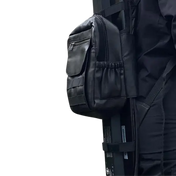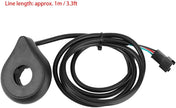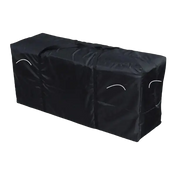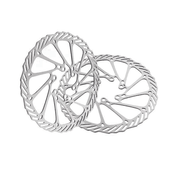Are you ready to transform your daily commute with an electric bike? Whether you’re a seasoned cyclist looking to upgrade or a newcomer eager to ditch public transport, we’ve compiled all our tips to make a comprehensive electric bike buyers guide so you can make an informed decision.
With innovations in technology and a surge in popularity, 2024 is the ideal year to invest in an e-bicycle. Still, navigating through the various options in the market can seem daunting at first. Keep reading as we delve into how to choose an electric bike that not only matches your style but also meets your practical needs.
Pre-Purchase Considerations
When considering purchasing an electric bike, understanding the different types available and the basics of e-bike batteries and motors can help you make a decision that best suits your needs:
I. Choosing a Suitable Electric Bike Type
E-bicycles come in different designs, each tailored for specific riding conditions and needs. Here are the most common types:
- Commuters: Such bikes are designed for comfort and practicality on urban roads. They’re often lighter and more aerodynamic, with relatively smoother and narrower tyres for reduced friction and faster speeds. They often feature large tyres, around 26 inches in diameter, to provide enhanced responsiveness. 20-inch variants can be more suitable if you’ll navigate sharp corners and narrow streets and need enhanced control.
- Off-Road E-Bikes and eMTBs: These are built for rough terrain and trail riding . With sturdy frames, suspension systems, throttles, and fat tyres, riders can enjoy grip, durability, and power on uneven paths and trails. eMTBs are a sub-category of off-road e-bikes with larger 27-inch tyres. You can read more about them here .
- Hybrid E-Bikes: Hybrid electric bikes combine the features of road ebikes and electric mountain bikes: mid-width but large rugged tyres, lightweight frame, and comfortable riding.
- Fat-Tyre Electric Bikes: Our personal favourites, bikes with 4-inch wide tyres have increasingly been serving as all-purpose electric bikes, especially given the UK’s roads, potholes, and terrains. With enhanced shock absorption, grip, traction, and power, they can take you through mud, snow, sand, roads, mountains, gravel, and whatnot. They’re heavier, but that does not affect their manoeuvrability and storage. However, lifting them to put them in a car’s boot or public transport can be a hassle.
- E-Cargo Bikes: E-cargo bikes are built with larger frames with one or more cargo storage areas, making them ideal for transporting groceries, tools, or even children. They are an excellent alternative to a car in urban environments for running errands or dropping kids at school. However, you can convert your regular electric bike to a cargo one by installing some accessories, given the bike has a decent weight tolerance.
- Folding Bikes: Any of the types we mentioned above can come in folding variants for easy storage and portability. If your commute involves taking public transport for some of your routes or you have limited storage space at home or work, folding bikes are the way to go.

II. Choosing the Right Motor
The motor is a critical component of any electric bicycle, significantly influencing how the bike performs under various conditions: Understanding the different types of batteries and motors can help you choose an e-bike that meets your performance expectations and maintenance preferences.
The Types of Motors
- Hub Motors: Hub motors are integrated into either the front or rear wheel hub and propel the bike by directly spinning the wheel. They are simple, relatively inexpensive, and quiet but can change the bike’s handling dynamics.
- Mid-Drive Motors: Located in the center of the bike, these motors drive the crank rather than the wheel, and work in conjunction with the vehicle's gears. Mid-drive systems offer better handling and efficiency on hilly terrain, making them the preferred option for off-road e-bikes.
Front hub motors, in particular, can make handling the electric bike a little risky, so we always recommend rear-hub motors – they’re more economical than mid-drive and safer than front hub,
Motor Ratings
Electric bike motors can range anywhere from 250W-2000W. Larger motors provide more speed and acceleration, but they have stricter laws around them. For instance, In the UK, you can not use electric bikes with wattage above 250W on public property without a moped driving licence. You’ll also have to register, tax, and insure them.
Electric bikes with 250W motors are perfectly capable of providing you with all the assistance and speed you’ll need for commuting. We don’t recommend going above 500W either way, unless you’re considering ebike racing.
III. Choosing the Right Battery
Electric bikes usually sport Lithium-ion batteries, and they can range anywhere from 7Ah to 30 Ah, At least in the UK as of yet. You must make sure that the battery cells are manufactured by a reliable company, like Samsung, LG, Panasonic, etc.
Electric bikes usually sport Lithium-ion batteries, and they can range anywhere from 7Ah to 30 Ah, At least in the UK as of yet. You must make sure that the battery cells are manufactured by a reliable company, like Samsung, LG, Panasonic, etc.
So, what battery rating will suit you?
As our tests with our Panther indicate, a 14Ah battery on a full-suspension ebike with a 75kg rider can go up to 70 miles on plain London roads if you’re using pedal assist level 1/5 on a 28 kg bike. Extending this and assuming linear relation gives:
|
E-Bike Battery |
Maximum Range (battery life) for 75kgs Rider Weight |
|
7Ah |
35 miles |
|
10Ah |
50 miles |
|
12.8Ah |
64 miles |
|
14Ah |
70 miles |
|
20 Ah |
100 miles |
|
27 Ah |
135 miles |
Please remember that a hardtail electric bike will have a longer battery life in the same conditions, And a rigid bike without any suspension systems will have an even more extended one. Factors like battery health, pedal assistance, weight, difficulty of terrain, speed, and incline can all affect these calculations.
Also note that as it is never recommended to discharge an electric bike’s battery down to 0 because it can shut the BMS off, you must buy a battery that is larger than your estimated daily trip distances. For example, if you travel 30 miles daily and believe a 7Ah battery to be sufficient for you, ‘size’ up and get at least a 10Ah one so your battery’s charge always remains above 30%. Remember that the distance you can travel for a single charge will shorten as the battery ages, so sizing up is the safest thing to make the most out of your battery.
IV. Getting the Right Suspension System
Electric bikes can be differentiated based on their suspension systems that define their shock-absorbing capabilities. You will find the four main types in the market:
- Rigid e-Bikes : These electric bikes feature no suspension systems and we never recommend them, as they will make your bones rattle every stone and pothole on the way. The advantage is that they are low-cost and have a longer battery life.
- Hardtail e-Bikes : These come with a front shock-absorbing suspension fork but a hard tail, hence the name. Hardtail Electric bikes are an excellent balance between rigid and full suspension systems, offering you comfortable and smooth rides. If you recommend them for commuting and even off-road riding
- Full-Suspension e-Bikes : Featuring a shock-absorbing front fork plus a rear suspension, full-suspension electric bikes are the epitome of comfort in the world of bicycles. You can use them easily on roads too and they have superior off-roading capabilities. Their battery consumption is higher than the other two types, and they can be a little pricey as well.
- Fat e-Bikes: Plump tyres further enhance the shock-absorbing capabilities of bikes. Any of the three types of electric bicycles above can come in a fat-tyre version, promising even smoother rides. They are heavy, however.
Assessing Your Needs
Choosing the right electric bike starts with evaluating your specific needs and preferences, which can significantly simplify the selection process and ensure you get the most out of your investment:
The Purpose of the Bike
When you identify the primary use of your e-bike, you can determine which features you should prioritise:
- Commuting: For urban commuters, a commuting , hybrid, or all-rounder e-bicycle with a hub motor is typically sufficient since it offers a balanced and efficient ride on paved roads. Consider models with built-in racks for carrying bags or groceries, lights for early morning or late-night rides, and fenders to protect against road spray. A reliable battery life is also crucial to ensure that you can get to and from work with ease, so we recommend a lithium-ion or lithium-polymer battery .
- Recreation: If you’re more interested in riding for pleasure or leisure , the focus might be on performance and versatility. Comfortable seating for long rides, robust tyres suitable for various terrains, and higher speeds might be your priority. Off-road bikes or cruisers with a mid-drive motor and lithium-ion batteries could be ideal for these activities.
- Sport: Sports enthusiasts should consider an electric bike built for endurance and agility. Look for e-bike models designed with stronger frames, more powerful motors, and enhanced suspension systems to handle rough terrains. For example, it’s in your best interest to integrate a mid-drive motor for superior performance on challenging terrains and inclines.
- Deliveries: If you run a delivery business or work in such a job, You must prioritise a long-range electric bike with comfortable seating and robust suspension systems. It's best to buy from a local company for easy availability of spares and repair services, as you Will wear your electric bike out faster than an average person. Also make sure to prioritise quality build, high water and dust resistance rating, and tyres that can handle snow and mud.
Your Fitness Level and Mobility Needs
You must opt for an e-bike that aligns with your fitness and mobility needs for maximum comfort and utility. For instance, if you’re aiming to enhance your physical fitness or seeking a more active riding experience, go for a bike with adjustable pedal assistance . This allows for a customisable workout and enables riders to engage more physically by doing more pedalling themselves. Most electric bikes in the market offer this whereas ebike conversion kits may not do so. Some companies, like ours, take this a step further by giving you the option to set your bike’s pedal assistance fractions by dividing the power into 2, 3, 5, or 9 levels.
Conversely, if you’re looking for a more leisurely ride, go for an electric bike equipped with a powerful motor , which can offer higher levels of assistance for an easier journey.
If you are dealing with mobility challenges, such as joint pain or limited stamina, the design of the e-bicycle can significantly impact comfort and usability. E-bikes with step-through frames , ergonomic handlebars, and plush seating can make riding more accessible and enjoyable. These are also game-changing if you like wearing tighter attire – no one wants their pant seam ripping while trying to mount a bike, after all.
It's also important to consider the bike's weight if you want to fold it and take it on a bus or train.
Budgeting for an Electric Bike
Investing in an electric bike is not just about the initial purchase price; it also involves determining the ongoing costs of maintenance. Let’s discuss the budget considerations involved:
Price Ranges
Electric bikes in the UK vary widely in price, generally influenced by the type of motor, battery quality, frame material, and the additional features they offer:
- Entry-Level: Starting around £600 to £1,000, these bikes typically feature basic components, hub motors, and smaller battery capacities. They are suitable for casual riding . Note that they may not last for long and won’t be very comfortable to ride, as such a low price always comes at the cost of quality. If your budget is low, consider going for ex-demo electric bikes sold by companies or second-hand ebikes sold by individuals
- Mid-Range: Mid-range e-bikes are priced between £1,000 to £2,500, offering better build quality, more reliable mid-drive motors, and larger battery capacities. Such bikes are excellent for regular commuters and recreational riders alike unless you’re considering speed racing or planning to wear your electric bike down to the bone by travelling 200 miles a day.
- High-End: You can get premium electric bicycles for £2,500 and above with top-tier components, advanced motor technology, and high-capacity batteries. Designed for serious cycling enthusiasts, they can handle everything from steep terrains to long-distance touring. Delivery personnel who need to travel long distances every day can benefit from high-end electric bikes as well, however, mid-range e-bikes can also be suitable depending on the company selling them
Cost of Maintenance
Maintaining an e-bike involves several recurring costs, which are typically higher than those for a traditional bike due to their more complex components:
- Battery Replacement: The battery is often the most expensive component to replace. A typical lithium-ion battery lasts 3 to 5 years before it needs replacing, with costs ranging from £200 to £800.
- Servicing : Regular servicing is recommended to keep the bike in good working condition. This can cost around £50 to £120 per year, depending on the level of servicing needed.
- Repairs : Costs for repairs can vary based on what needs fixing. Replacement parts like brake pads, tyres, and chains are relatively inexpensive, but more complex repairs involving the motor or controller may be costly.
- Insurance: Considering the value of electric bikes , many owners opt for insurance to protect against theft and damage. Annual premiums can range from £100 to £200 based on the bike's value and the coverage level chosen.
How to Choose the Right Electric Bike
Selecting the right electric bike involves assessing different factors to ensure it suits your needs, offers comfort, and performs reliably:
Size and Fit Guide
Accurate measurements are key to finding a bike that fits well:

- Rider Height and Inseam: Measure your height and inseam to find the right frame size. The right inseam measurement is crucial not just for determining standover height but also for ensuring efficient pedalling.
- Reach and Handlebar Height: Confirm that you can comfortably reach the handlebars and that the handlebar height allows for a natural riding posture. Misalignment may lead to discomfort or even injuries over time.
- Test Saddle Comfort: When possible, sit on the bike to check the comfort of the saddle. Since electric bikes can facilitate longer rides, having a comfortable saddle significantly enhances your riding experience
Reading Reviews and Ratings
User reviews and expert ratings are invaluable resources that can guide your decision-making process. Focus on reviews that address the bike’s build quality, ease of use, and performance under various conditions. Reviews and ratings that compare the bike to similar models can also provide perspective on its value and functionality. Additionally, look for consistent feedback across multiple reviews, as recurring praises or complaints are a strong indicator of the e-bike’s reliable features or common issues.
Please note that the reviews on a shop’s own website can easily be manipulated by web admins, So remember to check Google and Trust Pilot reviews.
Test Riding Before Buying
Testing an electric bike before making a purchase ensures your cycling preferences and needs are being met. Visit local dealers that offer test rides or attend demo days at cycling events to experience the bike's performance firsthand. It's advisable to test the bike on various terrains and inclines to assess its handling and functionality across different conditions. And, if possible, consider renting the bike for a full day to evaluate its comfort and battery longevity over an extended period. This will give you a comprehensive understanding of its capabilities and suitability for your lifestyle.
P.S. At emovement , we offer free test rides in Woking and Weston-super-Mare. Get in touch to book an appointment!
Where to Buy Electric Bikes
Purchasing an electric bike is a significant decision, and where you buy it can impact not just the price you pay, but also the service and support you receive:
Buying an Electric Bike Online – The Pros and Cons
Online shopping offers a streamlined, flexible approach to purchasing an e-bike. Let’s consider both pros and cons:
Pros
One of the biggest advantages of buying online is the convenience. You can shop from anywhere at any time without the need to travel. Online stores often also have a broader inventory and access to a range of brands and models that physical stores can't match. And as many online retailers have lower overhead costs, they can give you lower prices and many discounts and promotions.
Another major plus point of buying an electric bike online is how easily you can easily access customer reviews and ratings online, providing insightful feedback and helping guide your decision. The longevity of electric bikes, in particular, can only be gauged accurately by reading detailed customer experiences.
Cons
Most bikes arrive partially assembled, and completing the setup can be a challenge if you're not mechanically inclined. The most significant disadvantage of buying online is that you may not be able to test-ride the bike before purchasing, which means you won’t know how well it fits or feels.
The return and refund process can also get lengthy and complicated, with many shady sellers refusing to refund you even if you have genuine issues.
(Of course, not us. We deliver fully assembled electric bikes , offer free test rides, and have insured deliveries, and our customer reviews speak for our easy return, refund, and warranty processes).

Buying an Electric Bike Online In-Store – The Pros and Cons
Purchasing an electric bike in-store provides a tactile, personalised shopping experience:
Pros
The ability to test-ride several models when buying from a physical store is invaluable. In-store staff can also offer expert advice tailored to your needs and help you choose the right model based on your preferences and budget. You can walk out with a bike that's fully assembled, adjusted, and ready to ride. In most of the cases, if there’s an issue, returning the product is generally straightforward and quick.
Cons
Physical stores have limited floor space, which means the range of models and sizes may be restricted compared to online. Due to higher overhead costs associated with brick-and-mortar stores, prices might be higher than those found online.
Shopping in-store also requires you to visit during business hours and this is not convenient for everyone. It can also lead to impulse bridges, where you buy an electric bike in a hurry after seeing a bicycle with a good build quality but do not read the reviews on the overall lifespan, software, battery quality, and availability of warranty, service, spares, and repairs.
Choosing the Best Electric Bicycle Retailers and Websites
When purchasing an electric bike, choosing the right retailer or website can significantly affect your overall satisfaction. Let’s consider some key features you should look for in a retailer to ensure you receive the best possible service and product:
1. Thoughtfully Curated Collections
We would recommend being a little wary of electric bike companies that stock hundreds of models – there is simply no guarantee that their quality will be consistent all across the board. You may read reviews about one decent bike and then purchase a slightly newer and lower-cost one and realise the discrepancy the hard way. Mass manufacturing is under heated criticism for all the valid reasons, after all.
A company that has a smaller range of thoughtfully manufactured electric bikes that actually cater to different rider styles, budgets, and body types. Such shops put the time and thought behind every single design they procure or manufacture and actively troubleshoot and incorporate user feedback.
2. Knowledgable Staff
An electric bike is a considerable financial investment, so it is essential to choose a company with staff that have first-hand knowledge and offer helpful, tailored advice. They should be able to answer your questions about different models, fit, and usage to help you make the best choice based on your needs.
3. Reasonable Warranty and Refund and Replacement Policy
When selecting your e-bike retailer, look for good warranty terms and easy refund and replacement policy A flexible return policy can lessen the risk of buying an e-bike unseen, which is important if you purchase online. Ensure the policy is clear and fair, offering a reasonable time frame for returns and exchanges.
4. Physical Locations for Test Rides
If choosing an in-store purchase, consider retailers that have physical locations where you can test-ride various models. This is invaluable for assessing the bike’s comfort and suitability .
5. Reliable After-Sales Support and Availability of Spares
In case you run into any problems with your electric bike, you should be able to get spare parts and repair services easily. Make sure that the parts for electric bikes are easily available and look for an electric bike company that either offers electric bike repair services or has authorised specific professional technicians to repair electric bikes on their behalf.
For instance, at emovement, we can either arrange delivery services for our customers to fix their electric bike ourselves or connect them with a Cycle Tech UK mobile technician.
Conclusion
To choose the right electric bike, you must do some preliminary research on e-bike basics, assess your needs, understand the financial implications, and find the right e-bike seller. We hope our guide to buying an electric bike has taken you through everything you need to know as a first-time buyer.
If you’re looking to purchase an e-bike, do give our collection a check. We’re a small UK-based business with a carefully curated collection and renowned customer support working for 5 years in the ebike market! You can read your reviews here and browse through our website here .

FAQs
1. What is the average lifespan of an electric bike battery?
The average lifespan of an e-bike battery is typically between 3 to 5 years or about 500 to 1,000 charge cycles. The longevity can vary based on the battery type, usage, and maintenance. Proper care can extend its lifespan, such as avoiding extreme temperatures and keeping the battery charged.
2. Can electric bikes be used in the rain?
Electric bicycles can be used in the rain. Most e-bikes are designed with water-resistant components to handle wet conditions. However, it's important to avoid submerging the bike's battery and electrical components in water. After riding in the rain, drying off the bike and checking for any water ingress in sensitive areas is advisable.
3. Do I need a license to ride an electric bike?
In the UK, you do not need a license to ride a standard e-bike that meets specific criteria: the motor must not exceed 250 watts, and the bike must not provide assistance when travelling more than 25 kph. These e-bicycles are treated like conventional bicycles under UK law.
4. What are the best brands of electric bikes?
The best brands of electric bikes often vary based on personal needs and budget. Popular brands in the UK include Raleigh, Evans Cycles, E-Movement, Bosch, and Yamaha.
5. How do I secure my electric bike from theft?
To secure your e-bike from theft, use high-quality locks such as U-locks or chain locks. It's recommended to lock both the frame and the wheels to an immovable object. Additionally, consider using a GPS tracker, registering the bike with a national database, and storing it in a secure, locked area when not in use.


